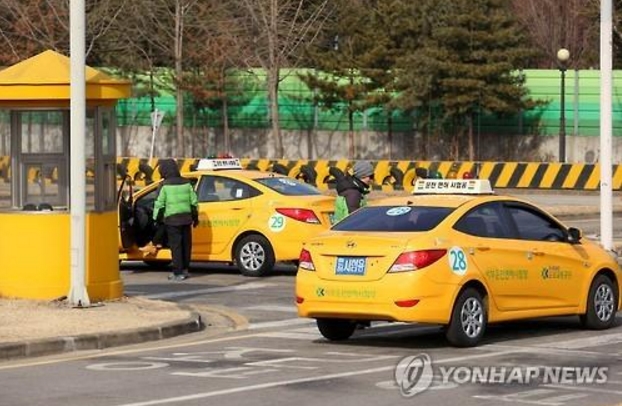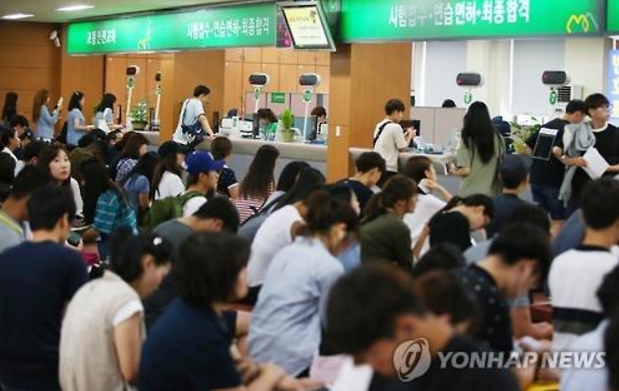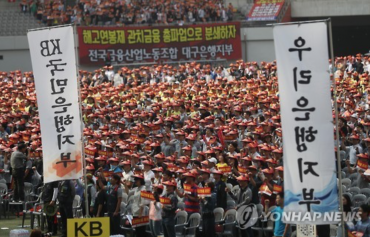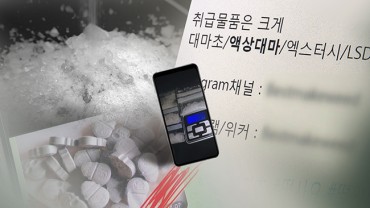
After the examination process was simplified, the passing rate for the driving course (closed course) portion of the examination jumped from 69.6 percent to 92.8 percent, but the passing rate on road tests, on the other hand, dropped from 78.7 percent to 58.5 percent. (image: Yonhap)
SEOUL, August 4 (Korea Bizwire) – Due to a recent increase in the number of fatal traffic accidents, the procedure to obtain a driver’s license in South Korea has become the object of public criticism. The Korean driver’s license examination was simplified for the “convenience of citizens” in 2010 and 2011, putting everyone at risk by letting drivers who have yet to master even the most basic fundamentals of driving get behind the wheel.
Around six years ago, the South Korean government made the national driver’s license examination much easier to pass, with the intention of reducing the time and cost required for citizens to obtain their permits. As such, the driving course test portion of the examination became less complicated, the required driver’s education time was reduced from 60 hours to 13 hours, and the number of examination categories was cut from 15 to just six.
After the examination process was simplified, the passing rate for the driving course (closed course) portion of the examination jumped from 69.6 percent to 92.8 percent, but the passing rate on road tests, on the other hand, dropped from 78.7 percent to 58.5 percent. These statistics clearly show that most drivers who apply for a license have not yet acquired the necessary skills to be operating a motor vehicle on real roads.
As criticisms began to mount regarding the relevance of the driver’s license examination, the Korean government revised the Traffic Enforcement Law, and will implement a new, stricter driver’s license application process as early as November 2016.
The closed course portion of test will become more difficult, and a new written test will cover about 300 more questions. The required driver’s education time will remain at 13 hours.
Experts, however, point out that the revised legislation is unlikely to be effective, as it simply marks a return to the former system that was in place before the simplification took place. They also emphasized that making the license examination more difficult to pass would not solve the fundamental problem, and was the wrong approach to take in the first place.
Other advanced countries have much more difficult driver’s license application processes, as driving is an activity that is closely related to the lives of drivers and others.
The average required driver’s education course time of OECD member states is 50 hours, which is four times that of Korea.
Most OECD countries issue a learner’s permit, or a provisional license, with limited privileges first, and later issue an official driver’s license when one is considered competent enough to drive by themselves, and only for drivers who do not have any traffic violations or accidents on record during the probation period. On average, it takes two or three years, sometimes four, to obtain an official driver’s license in these countries.
Some also point to the split of the current system as a source of the escalating problem of traffic accidents. Before 1995, driver’s licenses could only be issued at government DMVs, although the backlog of applications eventually led the government to create privately-run, for-profit professional driving institutions with the right to hold examinations.

Before 1995, driver’s licenses could only be issued at government DMVs, although the backlog of applications eventually led the government to create privately-run, for-profit professional driving institutions with the right to hold examinations. (image: Yonhap)
“The national driver’s license examination must accurately assess a driver’s ability to drive safely, and rigorous rules must be applied within the current system to sort out the current situation,” said Kim Deok-ryong, from the General Insurance Association of Korea.
By Nonnie Kim (nkim@koreabizwire.com)






